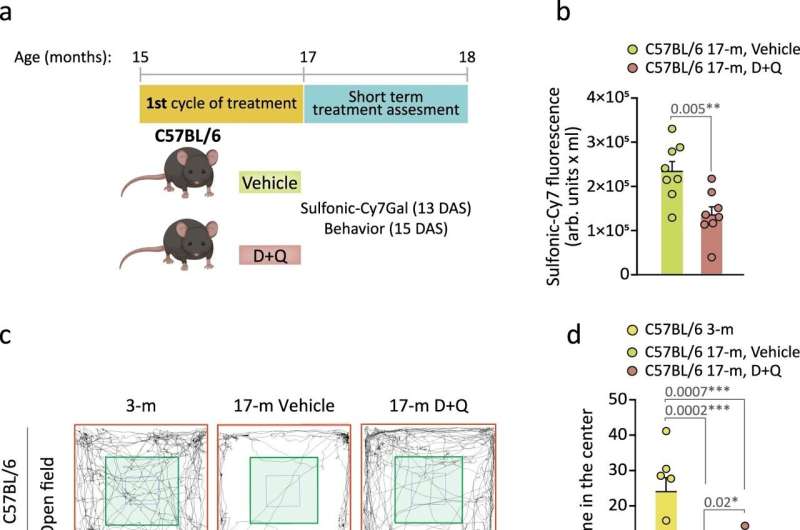This article has been reviewed according to Science X's editorial process and policies. Editors have highlighted the following attributes while ensuring the content's credibility:
fact-checked
peer-reviewed publication
proofread
How do we age? New probe can detect senescent cells in urine

A team of researchers has developed a new probe to detect senescent cells in urine, which could help to monitor and better understand the processes related to aging and establish new strategies to reverse the degenerative processes associated with it.
The research is published in Nature Communications.
As the researchers explain, one of the hallmarks of aging is the increased frequency of senescent cells in most organs, leading to tissue dysfunction. The presence of these cells is also associated with many age-related diseases.
"The main goal of cellular senescence is to prevent the proliferation of damaged cells that can lead to cancer. However, when damage persists or during aging, senescent cells accumulate abnormally, affecting tissue function and accelerating aging."
"This is why it is important to create new systems to detect these cells easily and effectively," says Ramón Martínez Máñez, deputy director of the Inter-University Research Institute for Molecular Recognition Research and Technological Development (IDM) at the UPV and scientific director of CIBER-BBN.
When injected into mice, the probe interacts with an enzyme particularly abundant in senescent cells, producing a fluorescent compound rapidly excreted in the urine. "And depending on the intensity of the signal in the urine, we can know the burden of senescent cells in the organism," says Isabel Fariñas of the UV and deputy director of CIBERNED, and researcher Mar Orzáez of the CIPF.
In their study, they also monitored senolytic treatment with drugs that eliminate senescent cells and can rejuvenate tissues. They observed that the intensity of the signal in the urine was related to the reduction of senescence in the animals and the reduction of age-related anxiety.
"When administered, a fluorophore is released, which is ultimately excreted by the kidneys and can be measured in the urine. The intensity of the fluorophore indicates the level of cellular senescence load, and we have seen that this correlates with age-related anxiety during aging and senolytic treatment," explains Isabel Fariñas of UV and deputy director of CIBERNED.
The results obtained by the team from the Universitat Politècnica de València, Universitat de València, CIBER-BBN, CIBERNED, and the Príncipe Felipe Research Centre open up a way to better understand aging and its effects on health. "It could help us to develop more effective ways of tackling age-related problems, as well as easy urinary treatments aimed at eliminating or reducing cellular senescence, even in humans," concludes Ramón Martínez Máñez.
More information: Sara Rojas-Vázquez et al, A renal clearable fluorogenic probe for in vivo β-galactosidase activity detection during aging and senolysis, Nature Communications (2024). DOI: 10.1038/s41467-024-44903-1



















